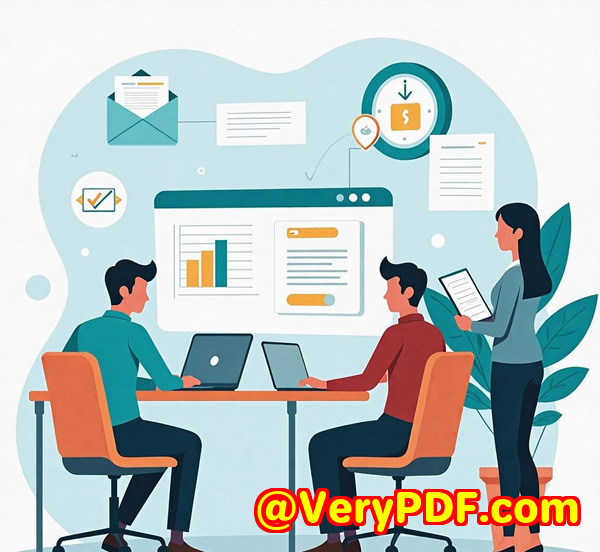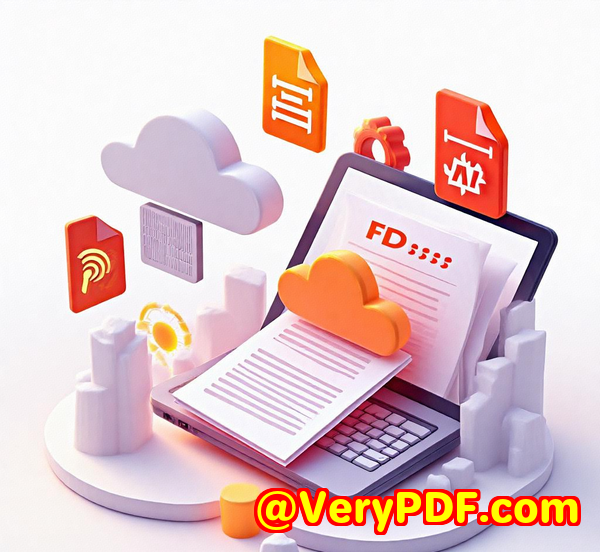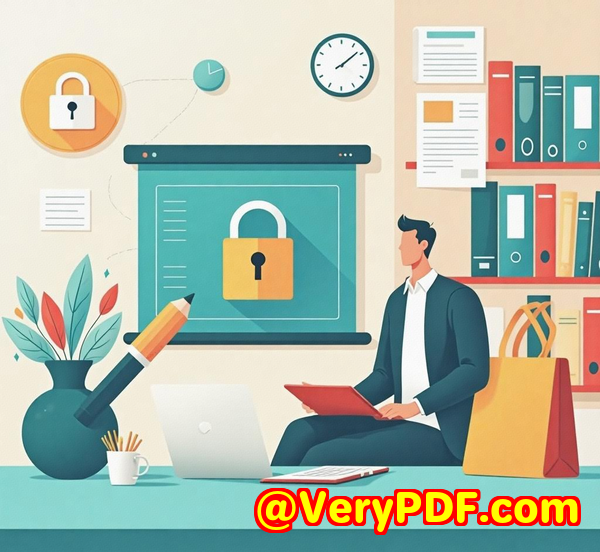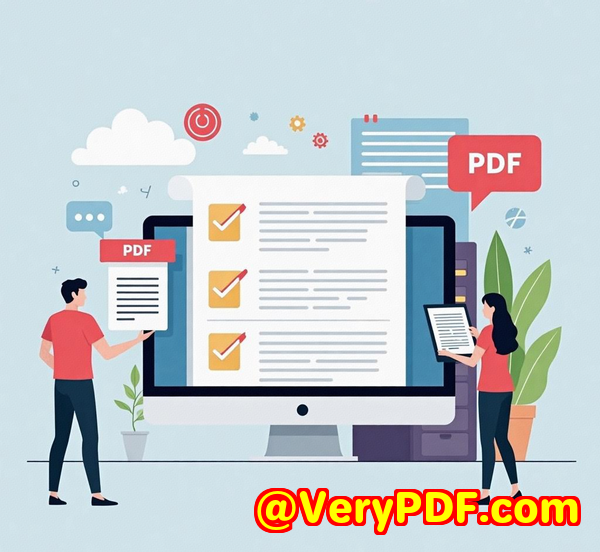Apply PDF overlays in enterprise backend systems using Python or shell scripting
Apply PDF overlays in enterprise backend systems using Python or shell scripting
Ever had to manually stamp company logos, watermarks, or headers on hundreds of PDFs?
I've been there. It's tedious, error-prone, and time-consuming. The kind of grunt work that kills productivity and eats into your day. If your enterprise deals with bulk PDFs invoices, contracts, reports you know how frustrating it is to apply overlays consistently without breaking a sweat.
That's why I was thrilled when I found VeryPDF's PDF Overlay Command Line and SDK. It's a game-changer for anyone working with PDFs in backend systems, especially if you're comfortable with Python, shell scripting, or other automation tools.
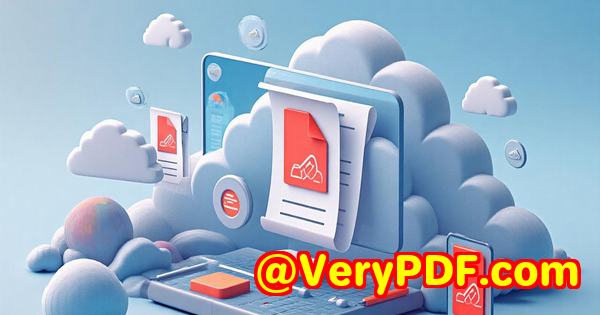
Why PDF Overlay matters and who needs it
PDF Overlay isn't just merging two files. It's about precisely layering content like adding a watermark, official letterhead, or form template on existing PDFs without messing up fonts, images, or vector graphics.
If you run a print centre, legal department, or finance team, overlaying lets you:
-
Add company branding to outgoing reports automatically
-
Stamp "Confidential" or "Sample" across sensitive documents
-
Insert disclaimers or footers in bulk without opening each file
-
Customize overlays by department, client, or document type
The flexibility here is huge. For developers building enterprise document workflows, this SDK means integrating overlay functions directly into your backend no extra manual steps, no online dependencies, and full control over PDF quality.
Discovering VeryPDF PDF Overlay SDK my experience
I first stumbled upon VeryPDF while hunting for a robust PDF overlay tool that could run offline, work on Windows and Linux servers, and fit nicely into Python and shell scripts. Most tools I tried either required cloud calls (a no-go for privacy and speed), or they botched the formatting on overlays.
VeryPDF's offering stood out immediately. The SDK is royalty-free, runs entirely offline, and provides both command-line tools and APIs, which meant I could plug it straight into my existing automation scripts.
Key features that make a difference
1. Offline, standalone operation
You don't need to rely on internet connections or external APIs. This is vital when processing sensitive financial or legal documents where data privacy is non-negotiable.
I integrated the command-line overlay tool into our nightly batch job on a Linux server, and it ran smoothly without any network hiccups or security concerns.
2. High-quality output with vector preservation
Unlike many other tools that flatten or rasterize PDFs (making text blurry or fonts wonky), VeryPDF keeps all vector content intact.
This was a lifesaver for print-ready invoices and contracts. The company logos, fonts, and backgrounds stayed crisp exactly what you want when sending official docs to clients or archives.
3. Flexible overlay positioning and conditional logic
You can overlay a single page or multiple pages, position overlays with custom coordinates, and even apply different overlays based on document properties.
For example, I set up scripts to add a special "Urgent" watermark only on invoices over a certain amount, while other documents received a standard company letterhead.
4. Cross-platform compatibility and batch processing
Whether you're running Windows servers, various Linux distros, or even Docker containers, this SDK fits right in.
In one project, I automated processing of thousands of PDFs overnight, with overlays applied consistently and error-free. The batch processing support means zero manual intervention.
How I applied it with Python and shell scripting
Here's a snapshot of how easy it was to get started:
-
Using Python's
subprocessmodule, I called the command-line overlay tool to apply a watermark PDF onto a folder of target PDFs. -
The script dynamically chose which overlay file to apply based on folder structure or filename patterns.
-
Logs captured success/failure for each file no guessing or manual double-checking.
-
In shell scripts, I used simple loops and parameter passing to run batch jobs, integrating seamlessly into cron jobs and enterprise pipelines.
It was surprisingly straightforward to embed into existing systems without rewriting my whole document flow.
How it compares with other PDF overlay tools
I've tried open-source tools and other commercial solutions that claimed overlay capabilities. But:
-
Many forced me to upload PDFs online, a no-go for private docs.
-
Output quality was often subpar, with font substitutions or image quality loss.
-
Limited scripting support or clunky APIs made automation a headache.
-
Pricing models were either subscription-based or had hidden fees for batch jobs.
VeryPDF's command line SDK struck the right balance one-time fee, no cloud needed, pro-quality output, and script-friendly.
Who should seriously consider VeryPDF PDF Overlay SDK?
If you're:
-
A developer building backend document automation in Python, shell, PHP, or C#
-
Running print centres needing high-quality overlays on client PDFs
-
A legal or financial team stamping disclaimers or confidentiality watermarks automatically
-
An education institution applying batch overlays for exams or eBooks
-
Anyone managing enterprise PDF workflows looking to eliminate manual PDF editing
This SDK can save you hours, reduce errors, and bring much-needed automation to a tedious task.
Wrapping it up why I recommend VeryPDF's PDF Overlay SDK
This tool tackles real-world headaches manual PDF stamping, inconsistent branding, and slow batch processing all with minimal fuss.
Personally, it freed me from late nights spent tweaking overlays manually and gave me confidence that every PDF leaving our system looked perfect.
I'd highly recommend this to anyone who handles large volumes of PDFs and wants a reliable, script-friendly overlay solution.
Start your free trial now and boost your productivity: https://www.verypdf.com/
Custom Development Services by VeryPDF
VeryPDF doesn't just stop at off-the-shelf tools. They offer custom development to fit your unique requirements across multiple platforms Windows, Linux, macOS, and mobile.
Their expertise covers:
-
Creating specialized PDF processing utilities in Python, PHP, C/C++, .NET, JavaScript, and more.
-
Building Windows Virtual Printer Drivers for PDF, EMF, and image formats.
-
Developing systems to capture and monitor print jobs in formats like PDF, PCL, TIFF, and JPG.
-
Implementing system-wide or application-specific Windows API hooks for monitoring file access and print workflows.
-
Providing OCR, barcode recognition, and layout analysis for scanned documents.
-
Delivering cloud-based solutions for document conversion, viewing, digital signatures, and DRM protection.
If you need a tailor-made PDF overlay system or want to automate complex document workflows, contact VeryPDF's support center at https://support.verypdf.com/ to discuss your project.
FAQs about applying PDF overlays in enterprise backend systems
Q1: Can I use the VeryPDF PDF Overlay SDK on both Windows and Linux servers?
Absolutely. The SDK is designed for cross-platform compatibility and runs smoothly on major Windows and Linux distributions.
Q2: Does the SDK require an internet connection to work?
No. It operates completely offline, ideal for secure and privacy-sensitive environments.
Q3: Can I apply different overlays to different pages within the same PDF?
Yes, the SDK supports overlaying specific pages or page ranges, with precise control over positioning.
Q4: Is there support for batch processing thousands of PDFs automatically?
Definitely. Batch mode is a core feature, and you can integrate it easily into scripts for large-scale automation.
Q5: What programming languages can interact with the SDK?
You can use Python, shell scripting, PHP, C#, Java, and other languages by calling the command-line tools or APIs provided.
Tags or keywords
-
PDF Overlay SDK
-
automate PDF overlays
-
backend PDF processing
-
batch PDF watermarking
-
VeryPDF command line tool
-
PDF overlay Python script
-
enterprise document automation
